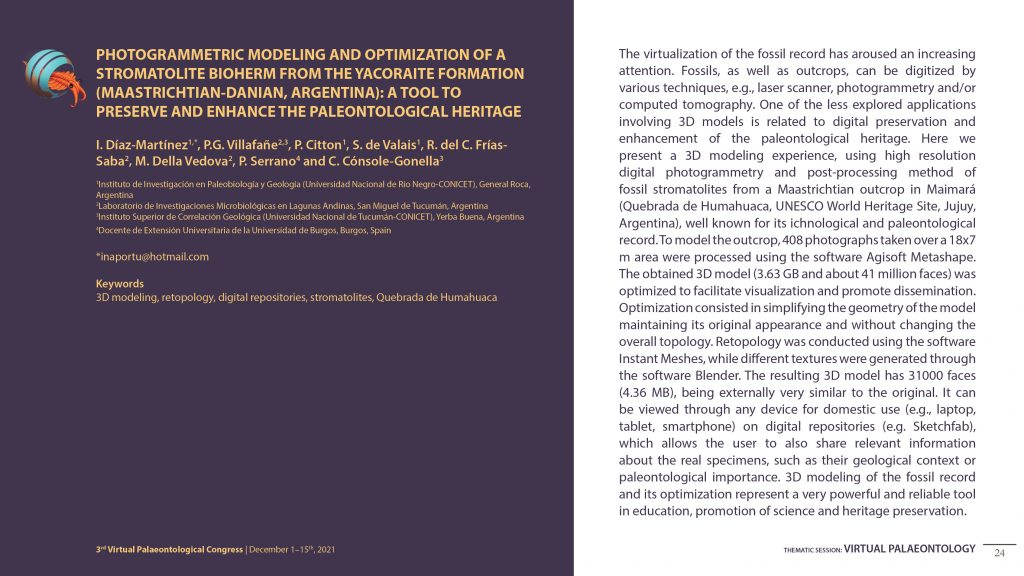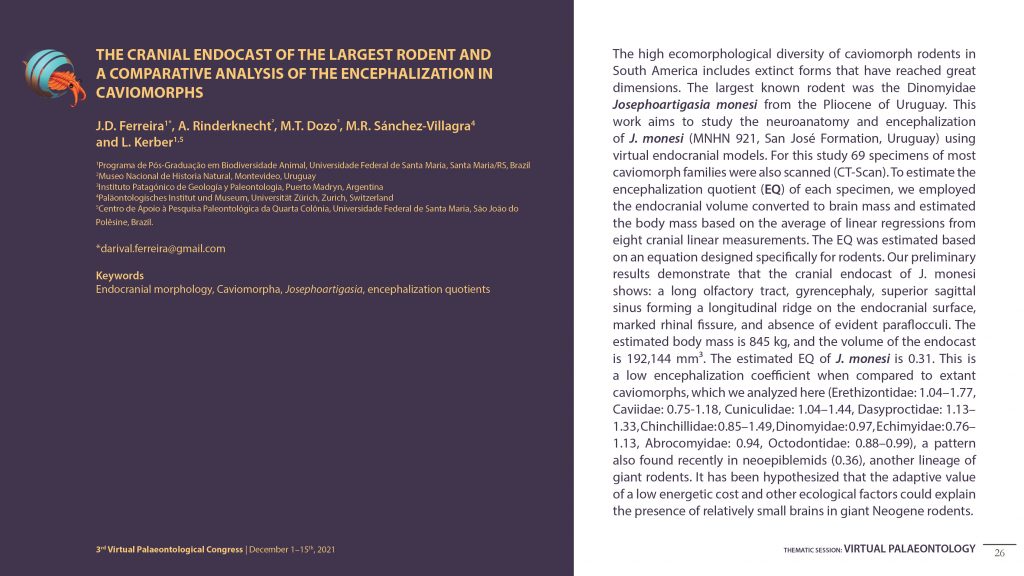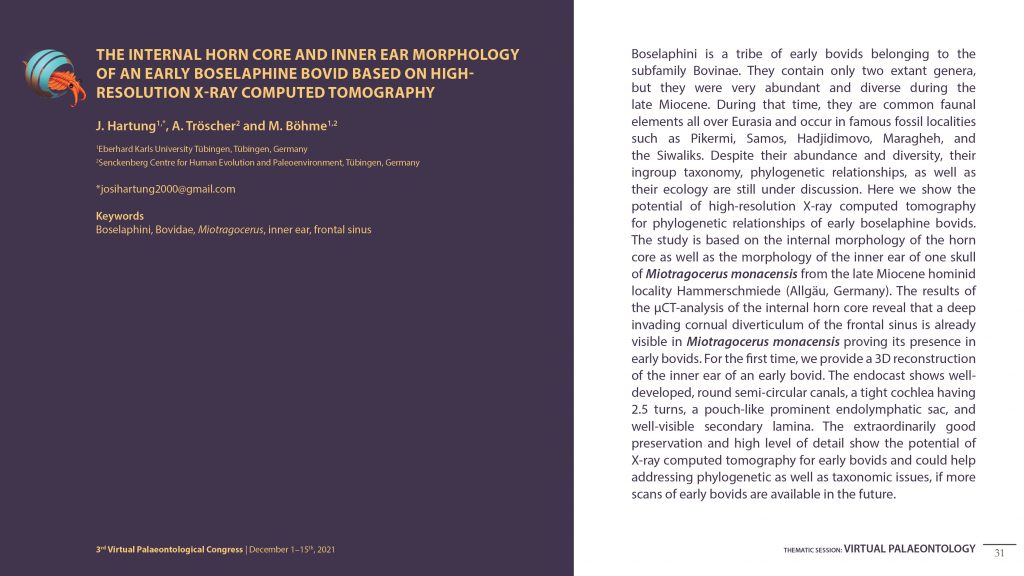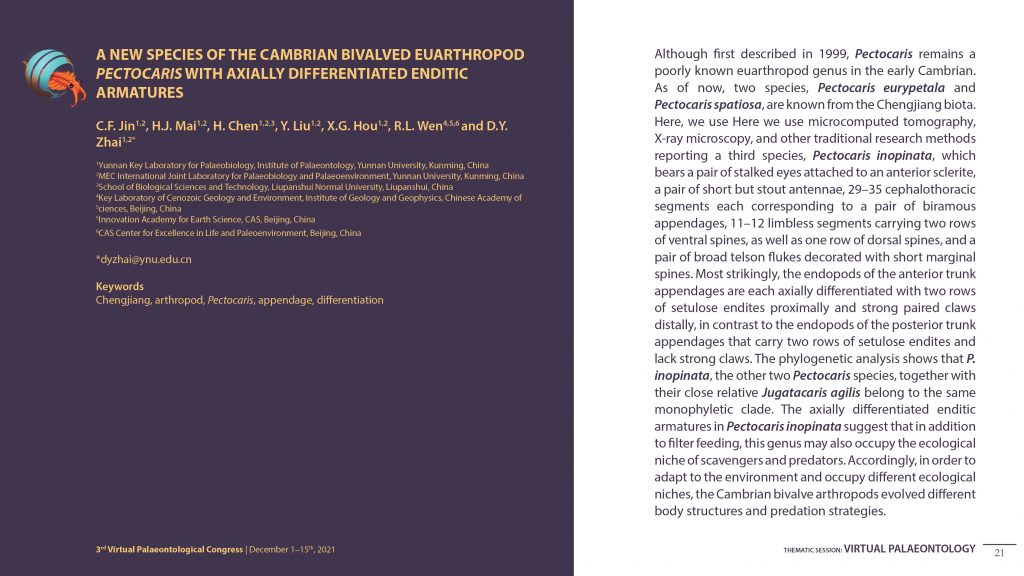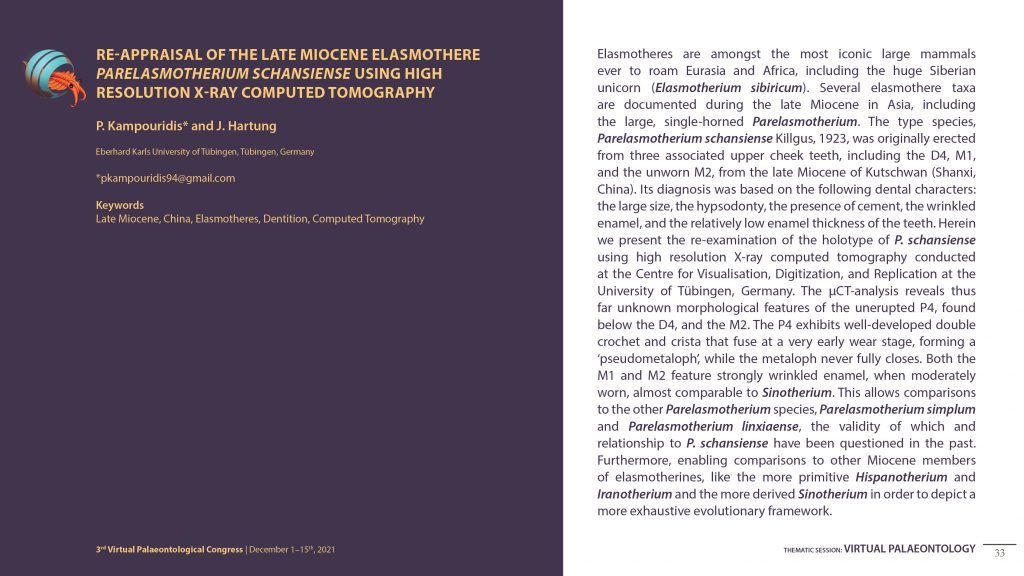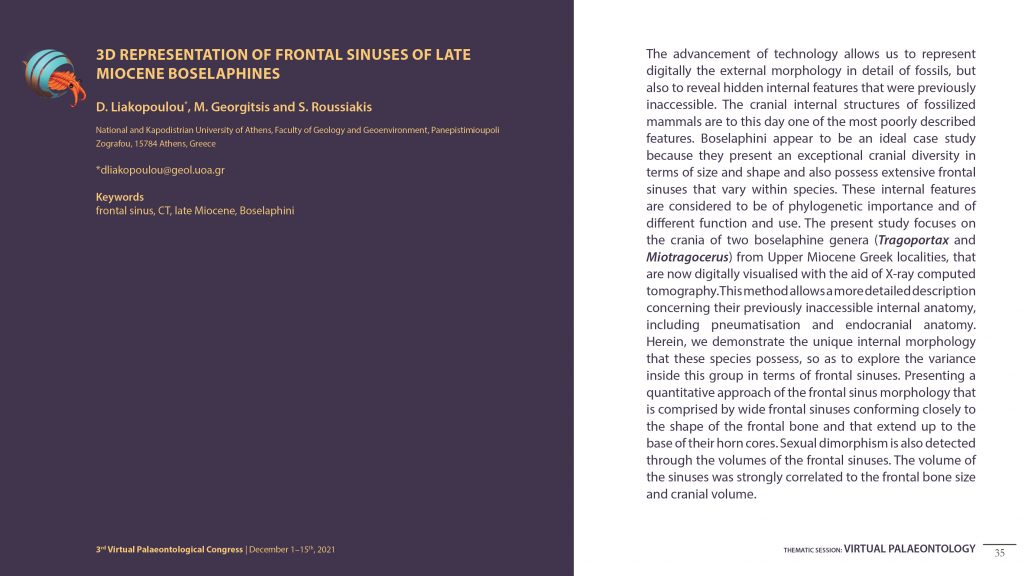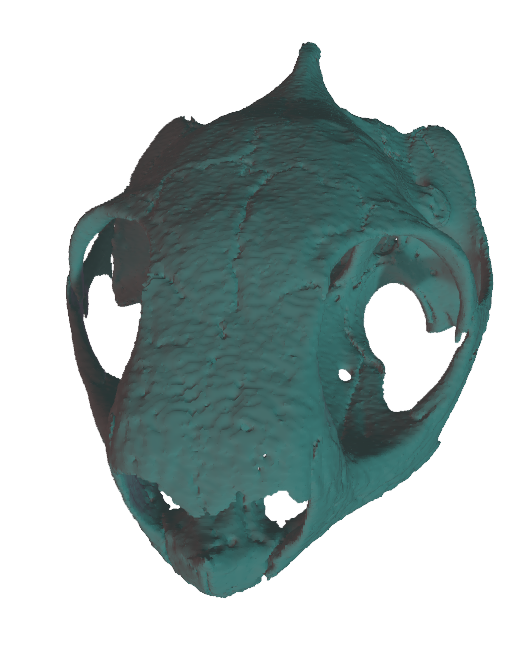
Organisers: Gabriel S. Ferreira1,2, Josephina Hartung2, Panagiotis Kampouridis2
1Senckenberg Centre for Human Evolution and Palaeoenvironment at the Eberhard Karls Universität Tübingen, Germany
2Fachbereich Geowissenschaften, Eberhard Karls Universität Tübingen, Germany
ABSTRACT:
A revolution is happening in Palaeontology by the fast increase in computational power and accessibility to new technologies, particularly computed tomography (CT scan), which allows the transformation of real unique fossils into easily replicable and shareable digital models. Computational models can be submitted to a set of techniques and methods, gathered under the label Virtual Palaeontology, most of which are currently common practice.
Even classical morphological descriptions of fossils are augmented by segmenting each bone separately, potentially revealing previously hidden traits. Analyses of neuroanatomy, innervation and arterial circulation, limited in the past by availability of fossilized natural or invasive latex casts, are now easily approachable through the reconstruction of digital endocasts. Likewise, quantitative analyses of morphology, such as geometric morphometrics, although possible, have become much more widespread in the virtual framework with the possibility of using 3D data and specimens restored back to their in vivo morphology. Beyond promoting the usage of already available tools and techniques, many methods previously unattainable can be now applied to fossil data. These include finite element (FEA) and multibody dynamics analyses (MDA), computational fluid dynamics and even mapping of chemical composition using synchrotron-based µX-ray fluorescence (µXRF), all of which offer more quantitative and experimental approaches for palaeontologists. Beyond the methodological innovation, the easiness of sharing data via online repositories promises not only to increase the replicability of palaeontological research but also to make it a more accessible field, especially for those researchers lacking travel funds.
The main goal of this session is to offer a space for those interested in Virtual Palaeontology to present and discuss their latest research results and the methodological advancements in the field. We wish also to discuss the accessibility of data and best practices to share results and datasets.
CONTRIBUTIONS:
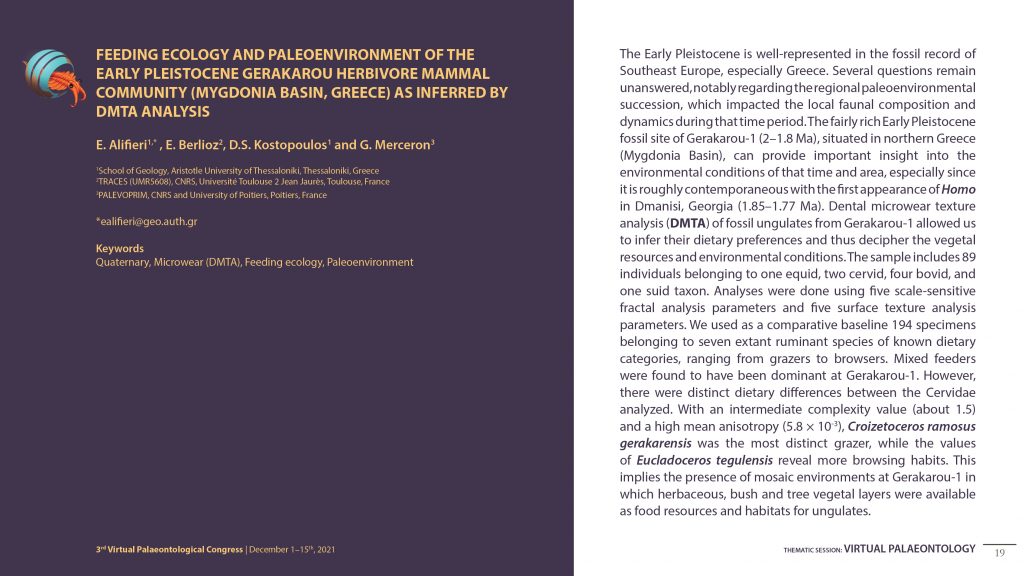
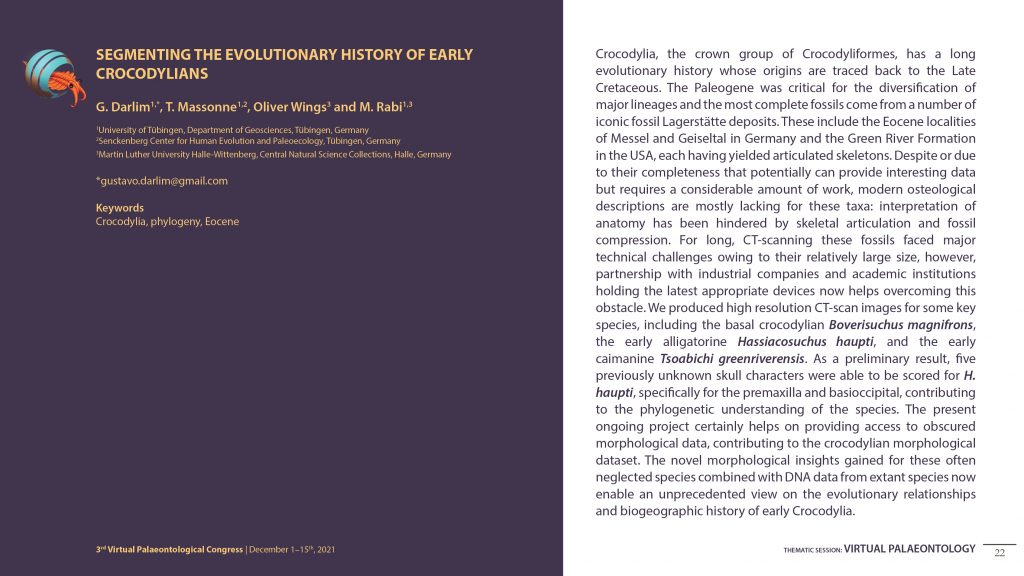
.
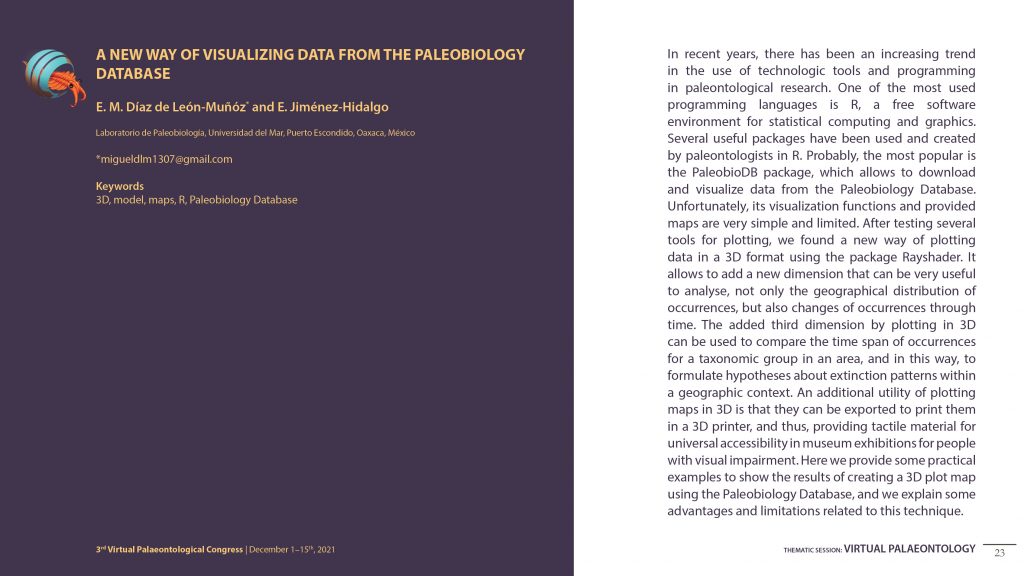
.
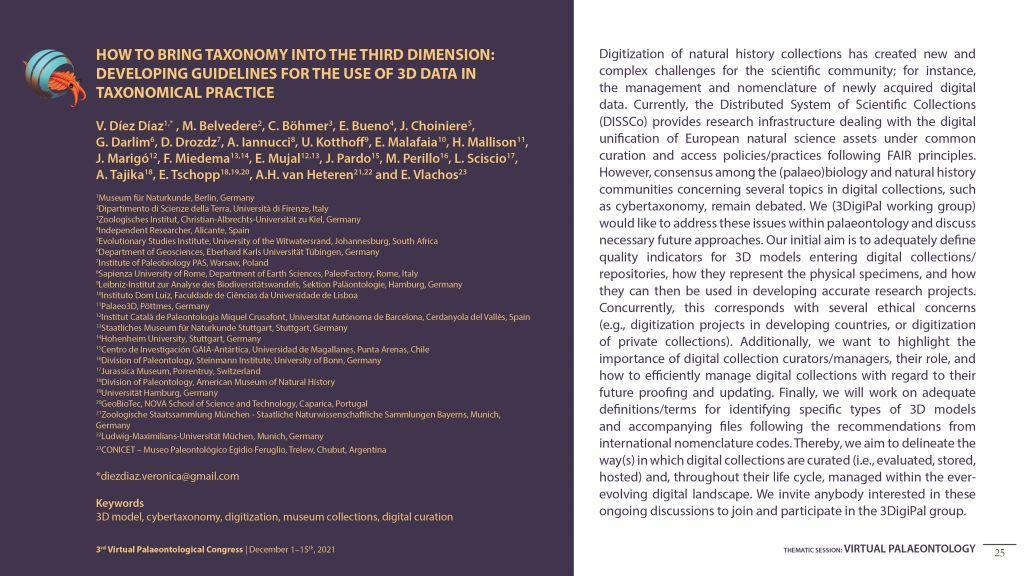
.
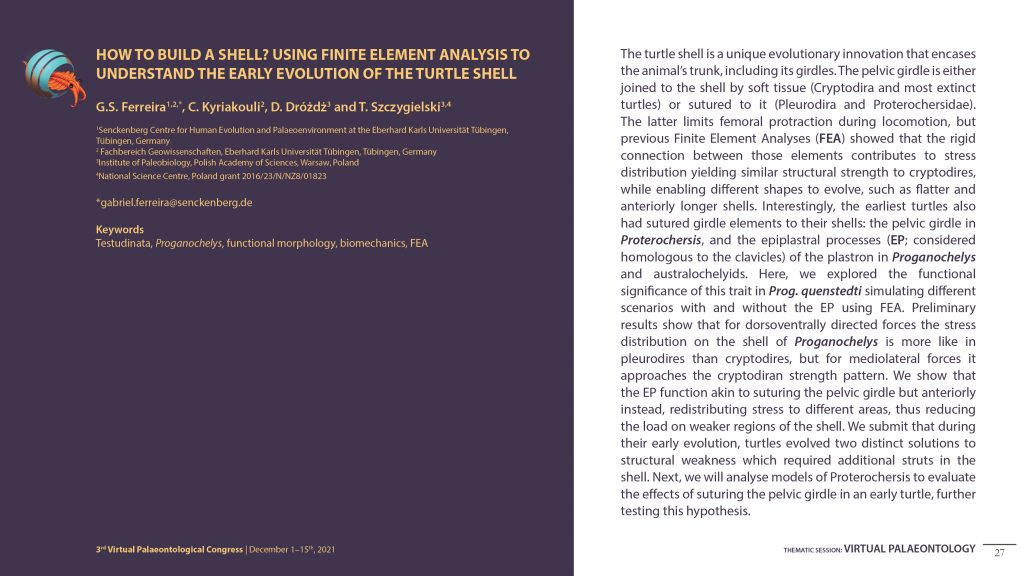
.
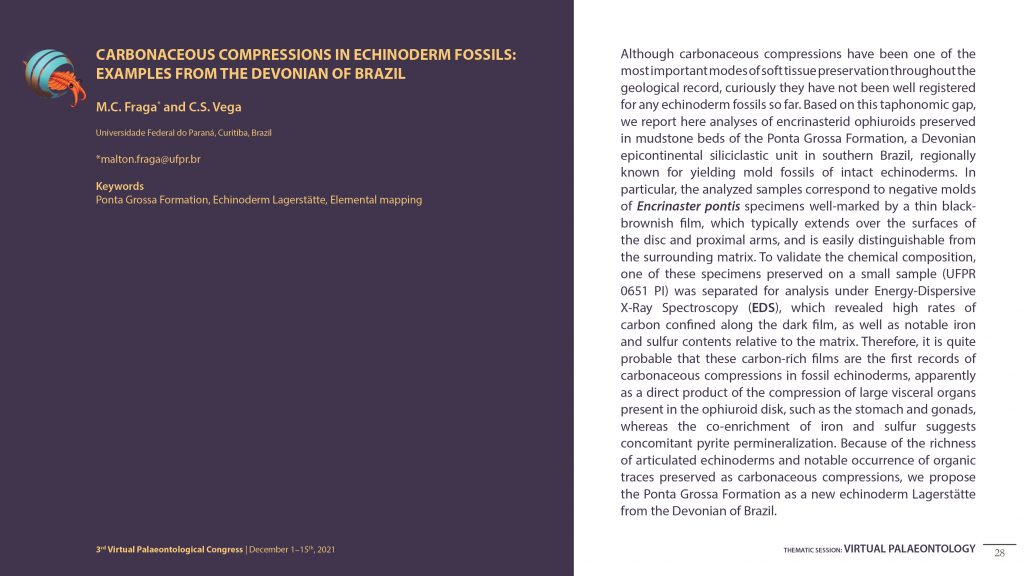
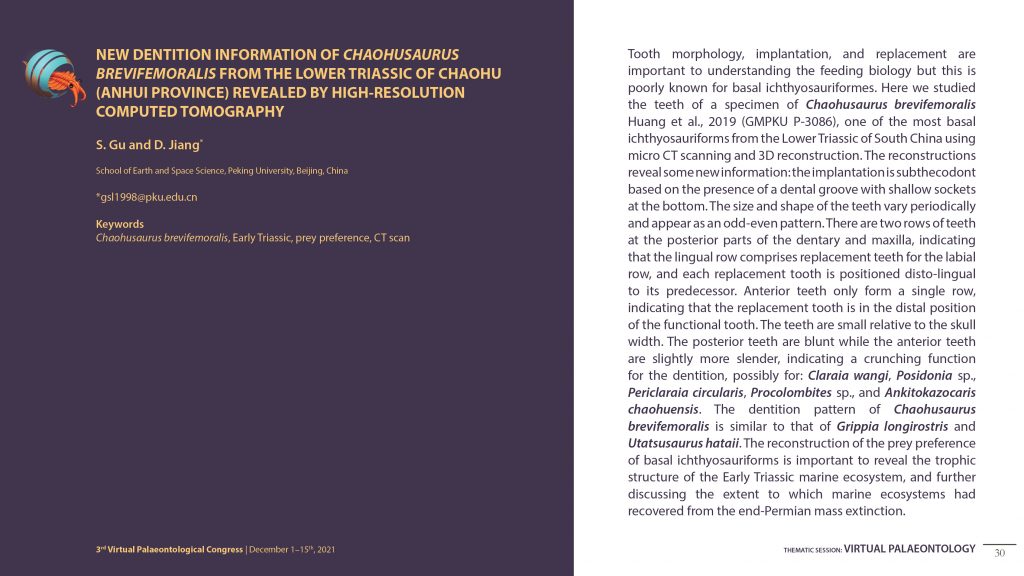
.
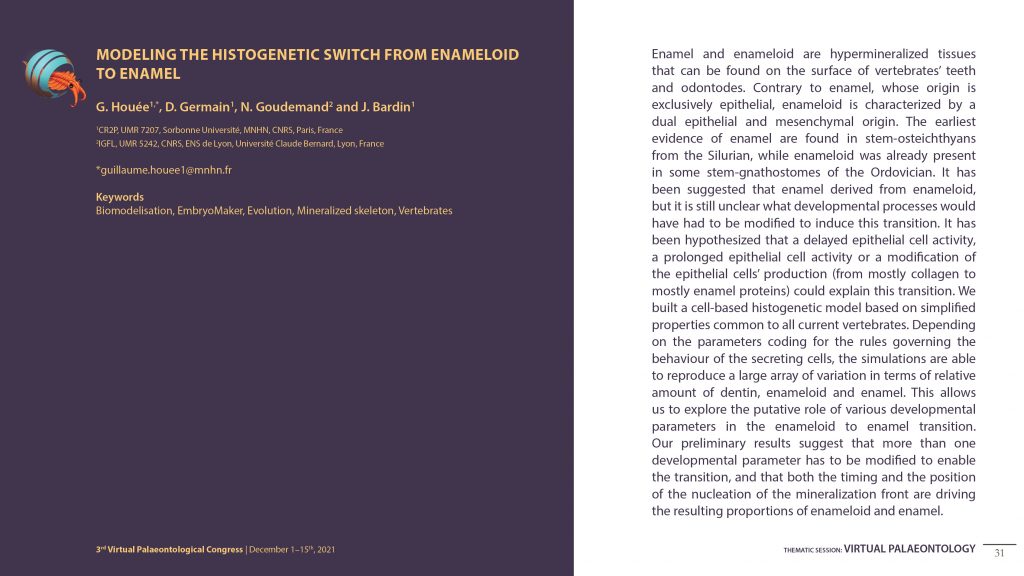
.
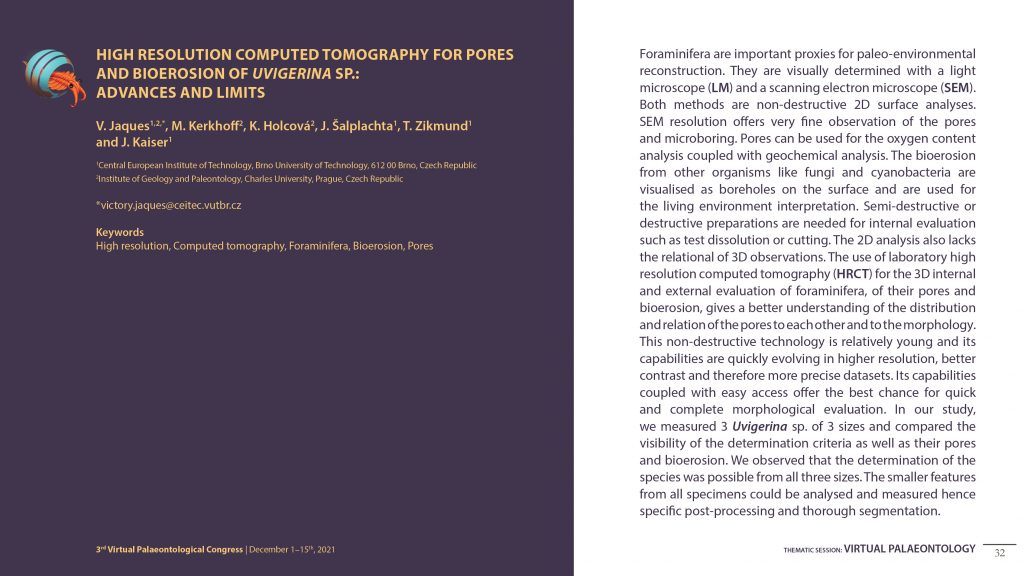
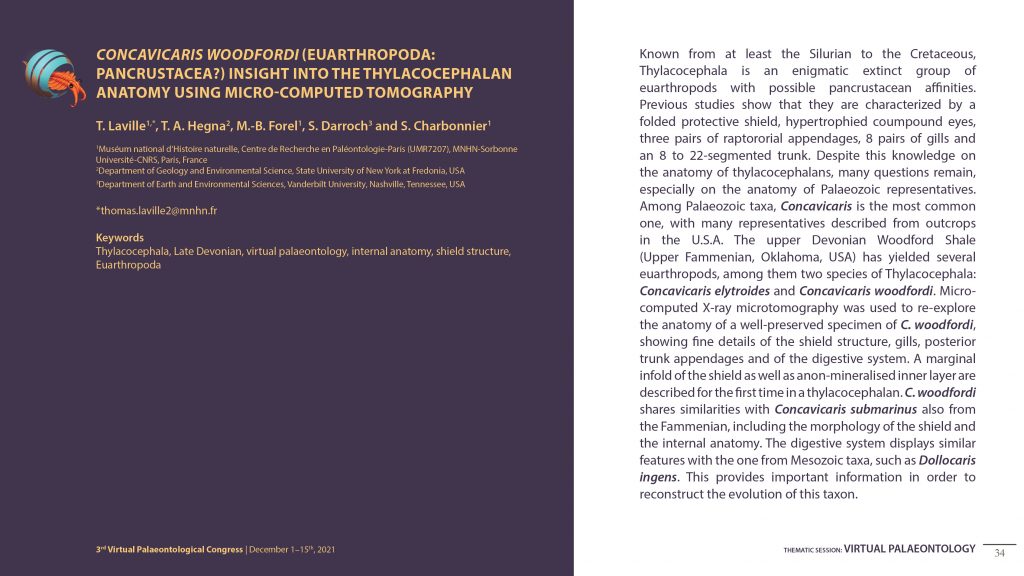
.
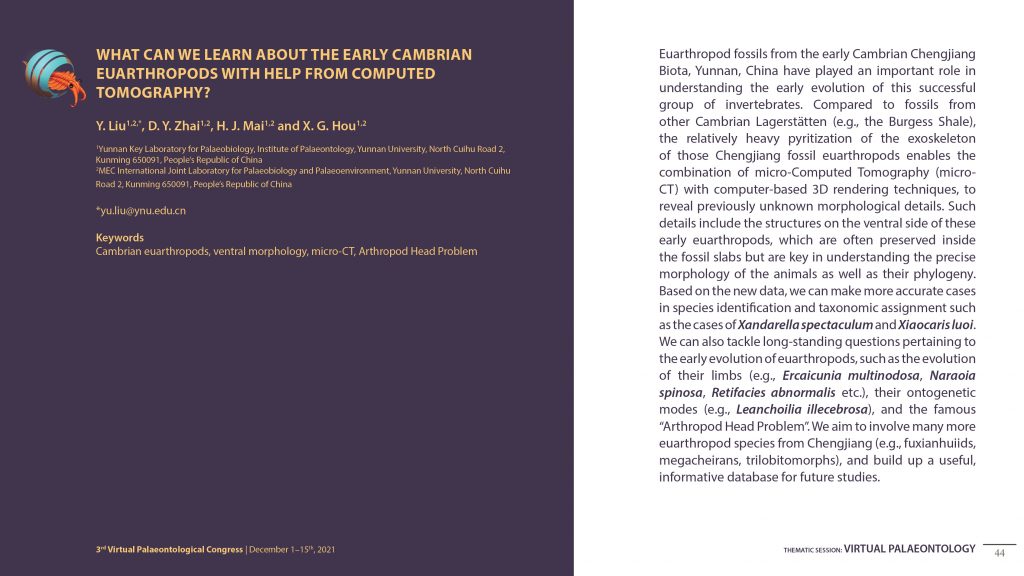
.
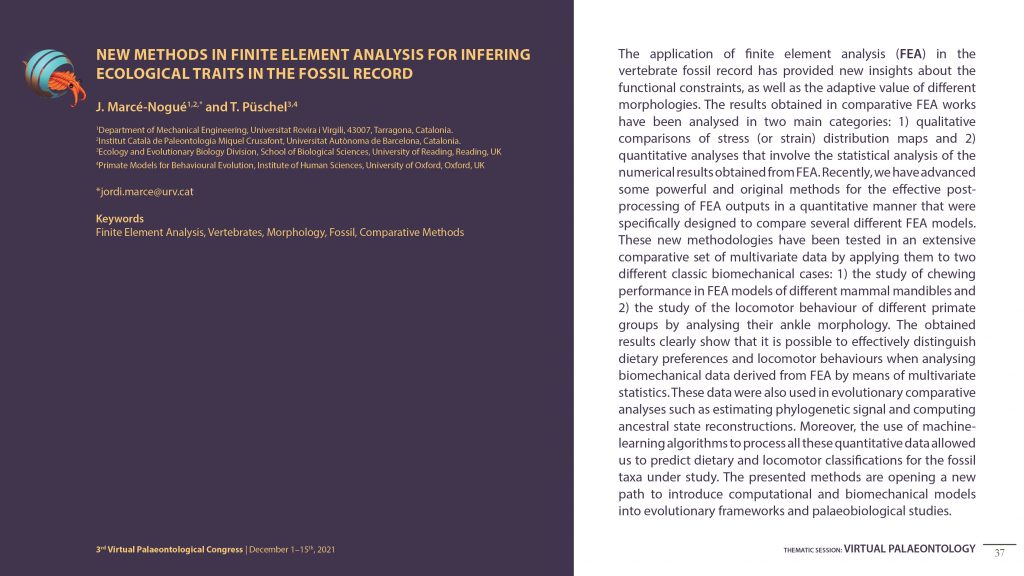
.
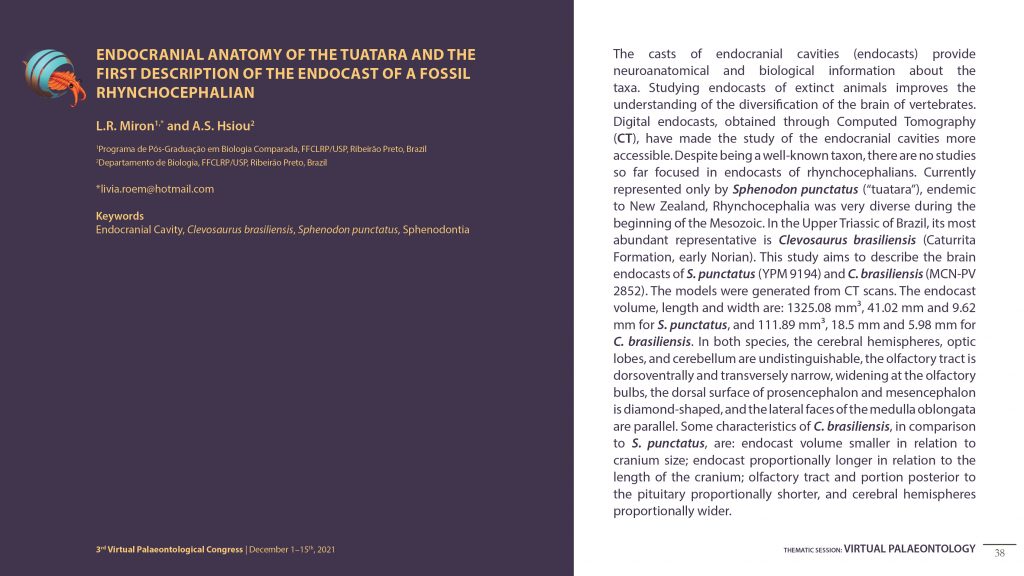
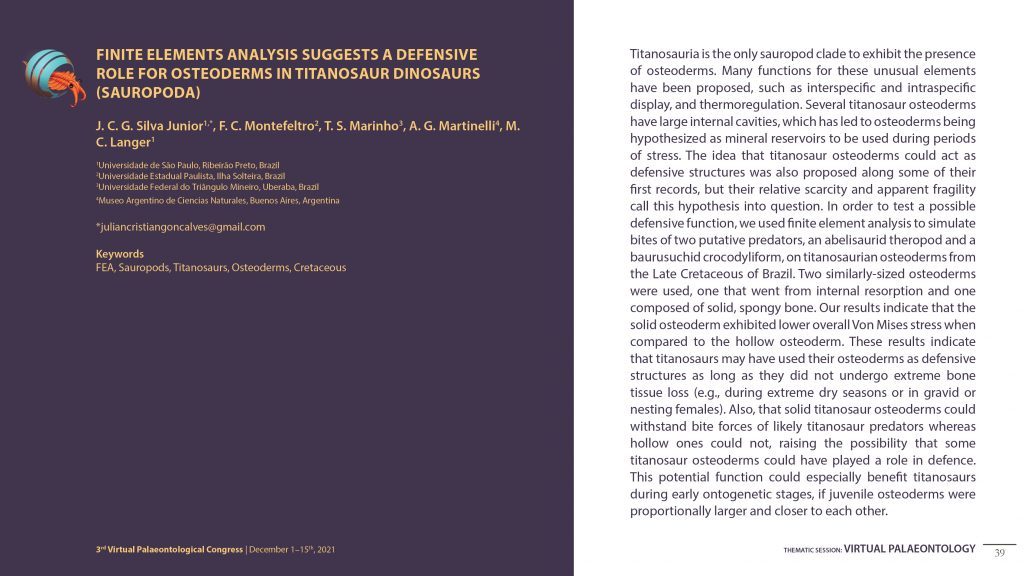
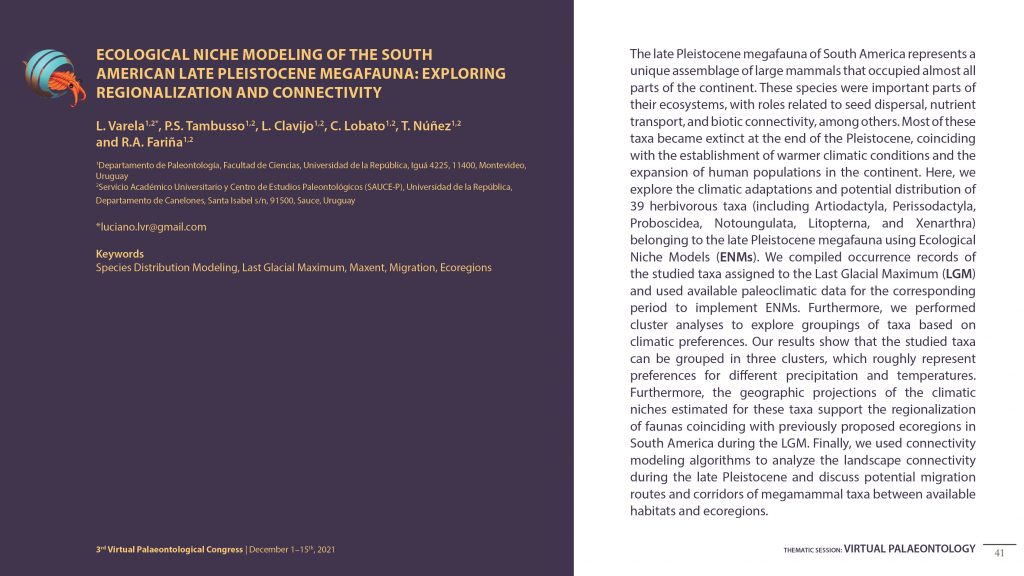
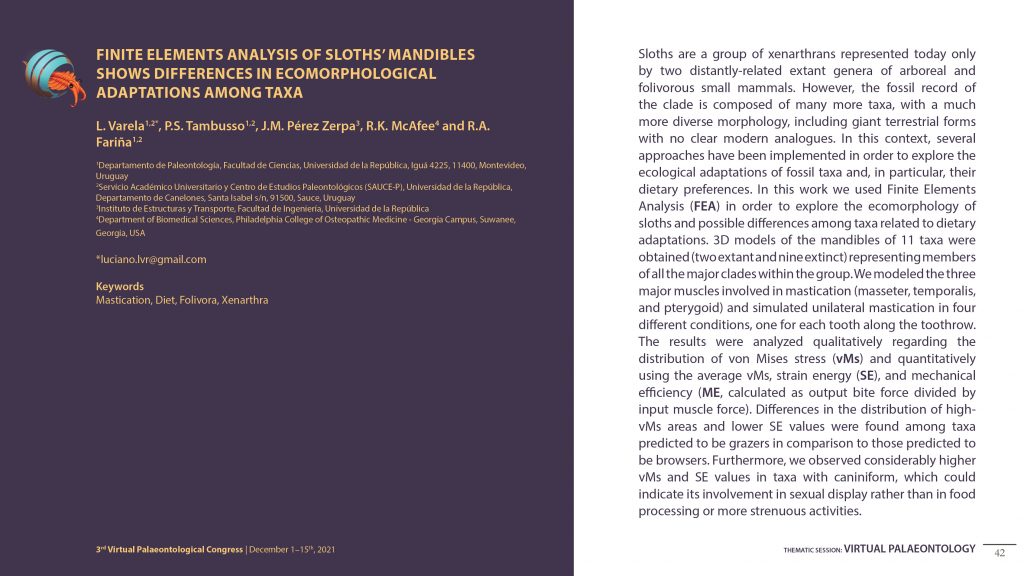
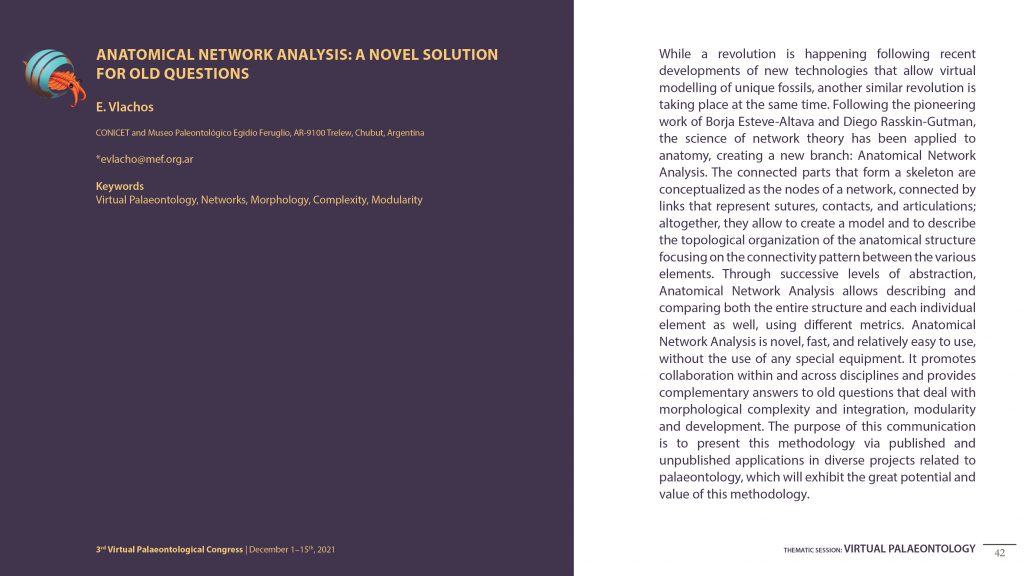
.
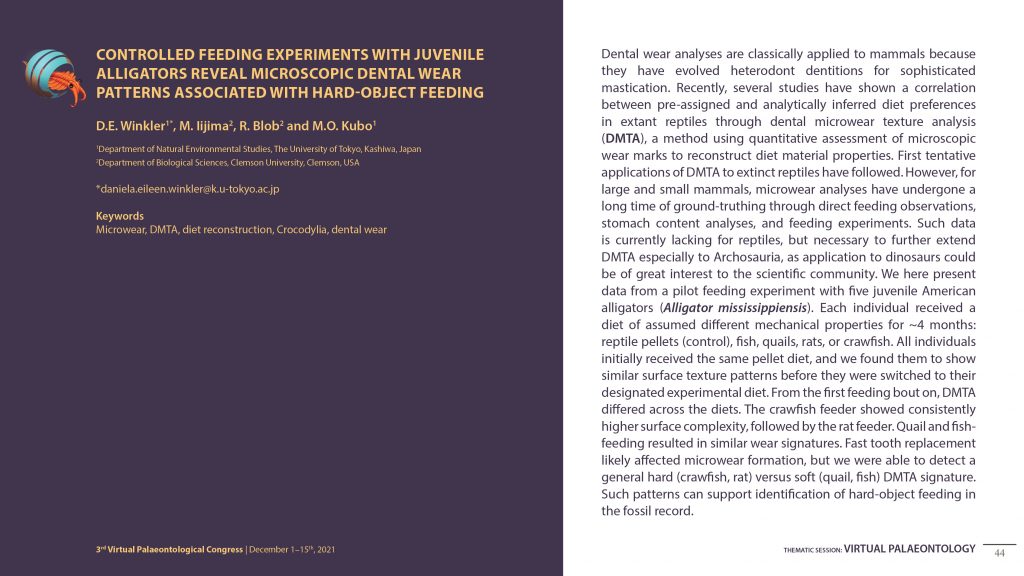
.
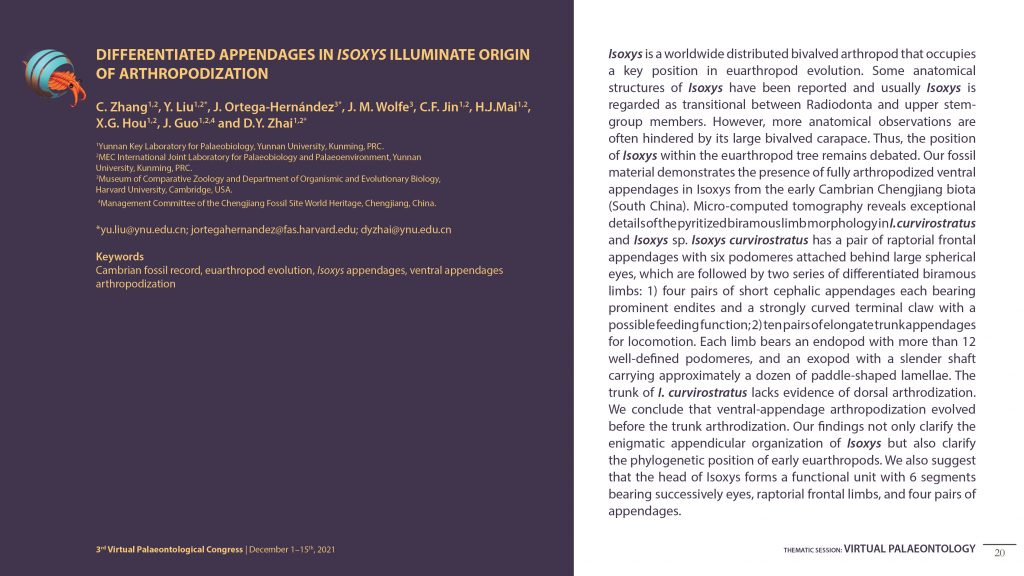
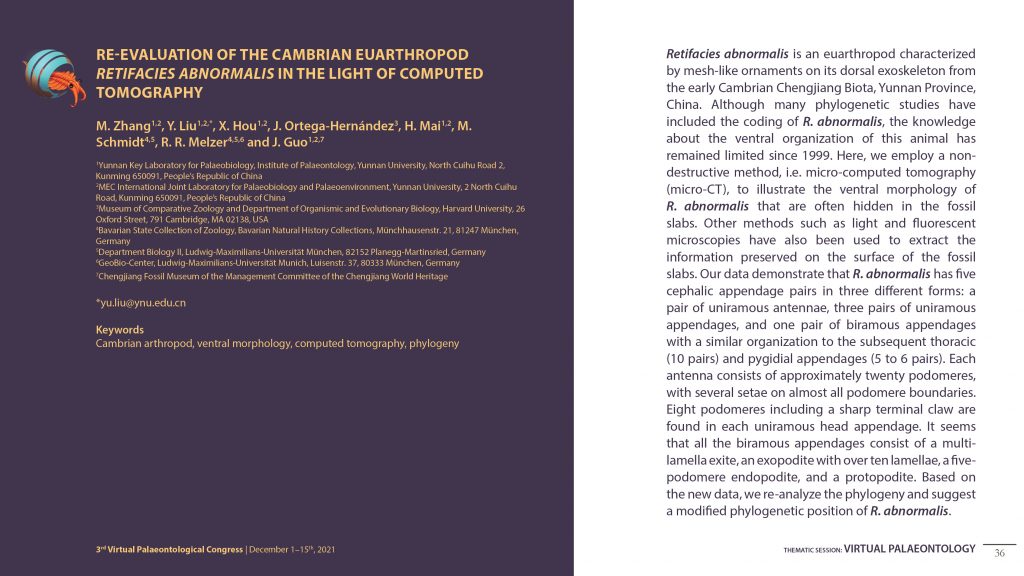
.
.
DISCORD SERVER: follow this link https://discord.gg/6YNggVyxjc to join the Discord server where you can find text channels and voice channels, for each of the thematic sessions, to further discuss these topics with your peers and more!
You can also leave comments in the section below.

